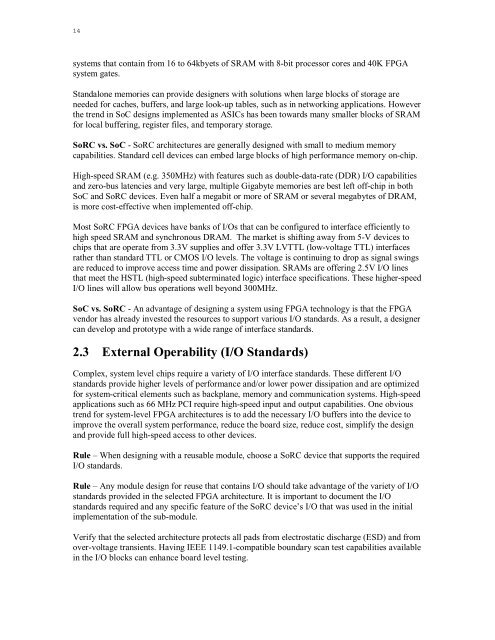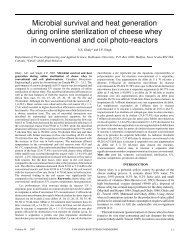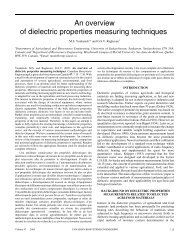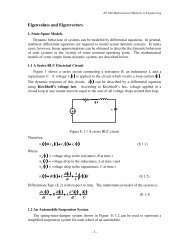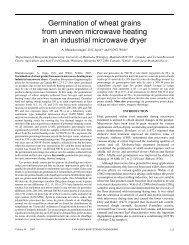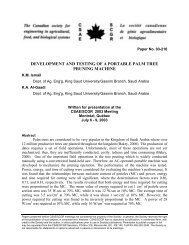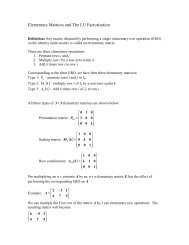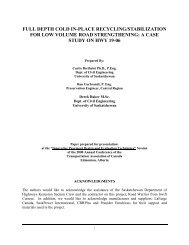Xilinx - Design Reuse Methodology for ASIC and FPGA Designers.pdf
Xilinx - Design Reuse Methodology for ASIC and FPGA Designers.pdf
Xilinx - Design Reuse Methodology for ASIC and FPGA Designers.pdf
Create successful ePaper yourself
Turn your PDF publications into a flip-book with our unique Google optimized e-Paper software.
14systems that contain from 16 to 64kbyets of SRAM with 8-bit processor cores <strong>and</strong> 40K <strong>FPGA</strong>system gates.St<strong>and</strong>alone memories can provide designers with solutions when large blocks of storage areneeded <strong>for</strong> caches, buffers, <strong>and</strong> large look-up tables, such as in networking applications. Howeverthe trend in SoC designs implemented as <strong>ASIC</strong>s has been towards many smaller blocks of SRAM<strong>for</strong> local buffering, register files, <strong>and</strong> temporary storage.SoRC vs. SoC - SoRC architectures are generally designed with small to medium memorycapabilities. St<strong>and</strong>ard cell devices can embed large blocks of high per<strong>for</strong>mance memory on-chip.High-speed SRAM (e.g. 350MHz) with features such as double-data-rate (DDR) I/O capabilities<strong>and</strong> zero-bus latencies <strong>and</strong> very large, multiple Gigabyte memories are best left off-chip in bothSoC <strong>and</strong> SoRC devices. Even half a megabit or more of SRAM or several megabytes of DRAM,is more cost-effective when implemented off-chip.Most SoRC <strong>FPGA</strong> devices have banks of I/Os that can be configured to interface efficiently tohigh speed SRAM <strong>and</strong> synchronous DRAM. The market is shifting away from 5-V devices tochips that are operate from 3.3V supplies <strong>and</strong> offer 3.3V LVTTL (low-voltage TTL) interfacesrather than st<strong>and</strong>ard TTL or CMOS I/O levels. The voltage is continuing to drop as signal swingsare reduced to improve access time <strong>and</strong> power dissipation. SRAMs are offering 2.5V I/O linesthat meet the HSTL (high-speed subterminated logic) interface specifications. These higher-speedI/O lines will allow bus operations well beyond 300MHz.SoC vs. SoRC - An advantage of designing a system using <strong>FPGA</strong> technology is that the <strong>FPGA</strong>vendor has already invested the resources to support various I/O st<strong>and</strong>ards. As a result, a designercan develop <strong>and</strong> prototype with a wide range of interface st<strong>and</strong>ards.2.3 External Operability (I/O St<strong>and</strong>ards)Complex, system level chips require a variety of I/O interface st<strong>and</strong>ards. These different I/Ost<strong>and</strong>ards provide higher levels of per<strong>for</strong>mance <strong>and</strong>/or lower power dissipation <strong>and</strong> are optimized<strong>for</strong> system-critical elements such as backplane, memory <strong>and</strong> communication systems. High-speedapplications such as 66 MHz PCI require high-speed input <strong>and</strong> output capabilities. One obvioustrend <strong>for</strong> system-level <strong>FPGA</strong> architectures is to add the necessary I/O buffers into the device toimprove the overall system per<strong>for</strong>mance, reduce the board size, reduce cost, simplify the design<strong>and</strong> provide full high-speed access to other devices.Rule – When designing with a reusable module, choose a SoRC device that supports the requiredI/O st<strong>and</strong>ards.Rule – Any module design <strong>for</strong> reuse that contains I/O should take advantage of the variety of I/Ost<strong>and</strong>ards provided in the selected <strong>FPGA</strong> architecture. It is important to document the I/Ost<strong>and</strong>ards required <strong>and</strong> any specific feature of the SoRC device’s I/O that was used in the initialimplementation of the sub-module.Verify that the selected architecture protects all pads from electrostatic discharge (ESD) <strong>and</strong> fromover-voltage transients. Having IEEE 1149.1-compatible boundary scan test capabilities availablein the I/O blocks can enhance board level testing.


